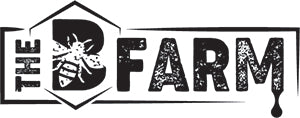Varroa mites are the most common and serious pest for honeybee colonies worldwide, and they feed off the bees. These mites weaken the bees’ metabolism and transmit deadly viruses that can cause the demise of an entire colony. With that in mind, controlling the mite population within your hive is the best way to combat disease. Follow along for ways to manage varroa mites in honeybee colonies.
What Are Varroa Mites?
Varroa mites are small, reddish-brown parasites that attack adult bees and larvae. While these mites prefer male drone bee larvae, they will also infest female worker bee larvae. Unfortunately, they may eventually cause a colony to collapse unless the beekeeper takes preventative measures.
Detecting Mites
Many colonies suffer from varroa infestations in the late summer or fall months; therefore, regular hive inspections and mite detection methods are essential for maintaining a healthy hive and colony that’ll survive the winter months.
Sugar Shake Method
The sugar shake method is relatively simple. You should take a glass jar with a mesh top and place approximately 200 bees and powdered sugar into it. Let the jar of bees sit for a few minutesa so that they are covered in the sugar. Next, shake the sugar out through the mesh top. Examine the sugar for dislodged mites; if you count ten mites per 200 bees, it’s time to take action.
Alcohol Wash Method
Similar to the sugar shake method, an alcohol wash requires placing 200 bees into a clear container. Fill the container with an inch of rubbing alcohol and shake for about 30 seconds. Count the number of mites you see floating in the liquid. You should consider treatment if you see 10 or more mites.
Sticky Board Method
Most beekeeping supply companies sell a commercial sticky board; you should purchase one if you suspect a varroa mite problem within your hive. Place it on the bottom floor of the hive, and then remove it after 24 hours. If you count 60-200 mites, it’s time to consider treatment options.
How To Eliminate Varroa Mites
Unfortunately, eliminating varroa mites isn’t always an easy task. However, it’s an incredibly important part of maintaining a healthy colony. Check out these helpful ways to combat varroa mites within your hives.
Screened Bottom Boards
Replacing the wooden bottom of your standard bee hive with a mesh screen may help reduce the number of mites naturally. While the reason screen bottoms help is unknown, it may be due to increased ventilation. Other treatments are usually necessary for severe infestations.
Mite Resistant Bees
Varroa-sensitive hygiene (VSH) is a trait within bees that helps them avoid parasites. Many bee breeders offer VSH queen bees, which have characteristics that may help make your colony more resistant to varroa mite infestations.
Pesticides
Pesticides are a generally reliable treatment for varroa infestations, but there is increasing resistance to these treatments that may reduce their overall effects. With that in mind, you should never attempt to use non-approved chemical treatments, and all beekeepers should consider pesticide training and certification before using pesticides on their hives.
Managing varroa mites in honeybee colonies isn’t the easiest part of beekeeping, but it’s imperative for maintaining healthy bees. Even though you may not see them in a regular hive inspection, it doesn’t mean they aren’t there: be sure to look a little closer for the sake of your bees.
